|
History
13th Century tomb-like structure in Siri Fort
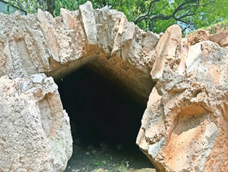
|
A tomb-like structure was discovered in the Siri Fort area by the Archaeological Survey of India (ASI).
About the site:
- Siri Fort was built in the 13th Century by Alauddin Khilji, considered to be the most powerful ruler of the Khilji dynasty (Delhi sultanate).
- It was used as a garrison town where his army used to reside.
- Hauz Khas village in Delhi was an extension of the fort, which was designed to meet the water needs of the army.
- The fort is currently in ruins and the only structure that remains is its boundary walls.
The Tomb architecture during Delhi sultanate:
Since the Delhi sultanate had a significant influence on the capital of Delhi:
- Indo-Islamic Fusion: The art and architecture of Delhi Sultanate also represented a fusion of Islamic and Indian styles.
- This is evident in Hindu motifs such as lotus and bell-shaped domes in Islamic buildings.
- For example, the Qutub Minar features intricate carvings of Hindu deities, along with Arabic inscriptions.
- Use of Red Sandstone: The Delhi Sultanate rulers extensively used locally available materials such as red sandstone, which was abundant in the region.
|
|
Location in News
Northern Sea Route (NSR)
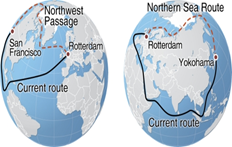
|
Russia has unveiled plans to invest 2 trillion rubles (about 24.58 billion U.S. dollars) in the development of its Northern Sea Route (NSR) over the next 13 years.
About the location:
- The Northern Sea Route (NSR) – a set of sea routes along Russia’s northern coastline connecting the Euro-Barents region with the Pacific Ocean
- It connects the eastern and western parts of the Arctic Ocean. The NSR runs from the Barents Sea, near Russia’s border with Norway, to the Bering Strait between Siberia and Alaska.
- NSR is different from the Northwest Passage which is a series of possible shipping routes connecting the Atlantic and Pacific Oceans through the Canadian Arctic.
- The entire route lies in Arctic waters and within Russia’s exclusive economic zone.
- It is one-third of the distance of the traditional route through the Suez Canal.
|
|
Location in News
Chite Lui River
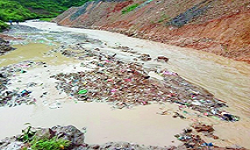
|
Chite Lui River is in danger as it turns into a dumping ground in Aizawl, Mizoram.
About:
- Chite Lui is not just a river for the people of the hilly north-eastern state. It holds sentimental values for them.
- Situated in an alluvial valley at an altitude of about 1,000 metres, the river starts its journey from Bawngkawn range in north Aizawl and flows for around 20 km in eastern Aizawl before joining River Tuirial at the southern end of the city.
- The river is close to the heart of the local population.
- Popular Mizo poet Rokunga wrote verses about Chite Lui.
- Stories and songs about the river are popular in Mizoram and even among the Mizo tribes in Myanmar.
|
|
Economy
UPI transaction limit set by Indian banks

|
Unified Payments Interface (UPI) transactions have been on the rise since its introduction however, Banks like HDFC, State Bank of India (SBI) and ICICI have set a limit on UPI transactions.
About UPI:
- It was introduced by the National Payments Corporation of India (NPCI) in 2016.
- NPCI has set out guidelines for UPI transactions stating that a person can initiate a maximum payment of Rs.1 lakh per day through UPI.
- The UPI limit varies from small banks like Canara Bank which allows Rs.25,000 transactions, to big banks like SBI that have set a limit of Rs.1 lakh.
- In addition to the money limit levied on UPI transactions, NPCI has also set a limit on the number of transactions per day.
- The new regulations state that per day a person is allowed up to 20 transactions post which they are required to wait for 24 hours to renew transactions. However, the limit can vary depending on the banks.
For other payment banks:
- Google Pay, Paytm, and Amazon Pay UPI have set a limit of Rs.1 lakh per day along with a total of up to ten transaction limits across all UPI apps and bank account.
|
|
Economy
Russia’s Sberbank launches Indian rupee accounts
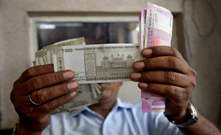
|
Russia’s bank has mentioned that, individuals could now open accounts in Indian rupees, expanding the range of foreign currencies and to reduce dependency on the U.S. dollar and euro.
About the move:
- As Sberbank has highlighted, the bank supports the trend of de-dollarisation and constantly increases the number of foreign currencies available to clients.
- Foreign banks that wish to establish a Rupee Vostro Account must first obtain approval from the RBI.
- Once approved, the foreign bank can open an account with a domestic bank and deposit funds in Indian rupees.
Rupee Vostro Account system:
- The Rupee Vostro Account system operates on a bilateral basis, which means that each foreign bank must establish a separate account with a domestic bank.
- The system enables foreign banks to conduct a wide range of transactions in Indian rupees, including trade finance, investment, and remittances.
|
|
Environment
Apocalyptic skies

|
Recently, the cities like Montreal, Toronto and New York, are covered in heavy smog as around 400 fires burn incidents occurred in Canada.
About:
- The event can poses a significant health risks to tens of millions of residents in the United States and Canada, particularly those living in close proximity to the affected areas.
- New York City’s air quality remains in the “very unhealthy” category as more thick smoke poured south from Canada’s devastating wildfires.
What are Wild fires?
- Wildfires require right climatic conditions, burnable fuel and a spark.
- Rising temperatures suck moisture out of plants, creating an abundance of dry fuel.
- While dry vegetation is the burnable fuel that serves as kindling for fires, the spark is sometimes caused by lightning, at other times by accident or recklessness of the local population.
- Wildfire smoke contains various harmful pollutants, including fine particulate matter, carbon monoxide, volatile organic compounds and nitrogen oxides.
|
|
Environment
East Africa’s Masai giraffes

|
According to a study, the population of Masai giraffe is declining. The Great Rift Valley, of Africa, is a crucial geological feature, has divided the Masai giraffe population into two groups.
About:
- The study found that giraffes on the east side of the Rift had no overlapping genes with giraffes on the west side, suggesting that females have not migrated across the Rift to breed in the past 250,000-300,000 years.
- The researchers aim to further study the populations of Masai giraffes on both sides of the rift, with a special focus on the particularly isolated ones, to more comprehensively understand the risks posed by inbreeding.
Reason for declining population:
- Habitat loss and fragmentation due to increasing pressure on land for agricultural, pastoral use;
- Poaching for bushmeat and traditional medicine and prolonged droughts are undoubtedly the most severe threats to Masai giraffe survival in the wild.
Masai giraffes:
- Masai Giraffes have a small hump on their back and have a spotted pattern similar to that of a leopard.
- Each subspecies of giraffe has a different coat pattern.
- Masai giraffes are from Kenya and have patterns that look like oak leaves.
- Both male and female giraffes have two distinct, hair-covered horns called ossicones.
- Eat for 16 – 20 hours a day.
|
|
Science and Technology
Griscelli Syndrome
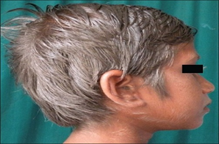
|
In a remarkable medical breakthrough, Rainbow Children’s Hospital recently achieved a significant milestone by successfully treating a 3 years old female patient diagnosed with Griscelli syndrome type 2, a rare genetic condition.
About the disease:
- The disease is compounded by the development of Hemophagocytic Lymphohistiocytosis (HLH), an immune system abnormality affecting her brain, the patient faced difficulty in walking for the past six months.
- Cure: With limited options available, the only curative treatment deemed viable was a bone marrow transplant (BMT).
|
|
Science and Technology
Respiratory syncytial virus (RSV)

|
European regulators have approved the region's first vaccine for respiratory syncytial virus (RSV), which causes thousands of hospitalisations and deaths annually.
About the disease:
- Respiratory syncytial (sin-SISH-uhl) virus, or RSV, is a common respiratory virus that usually causes mild, cold-like symptoms.
- Most people recover in a week or two, but RSV can be serious, especially for infants and older adults.
- RSV is the most common cause of bronchiolitis (inflammation of the small airways in the lung) and pneumonia (infection of the lungs) in children younger than 1 year of age.
|
|
Science and Technology
Diabetes Epidemic

|
According to a study conducted by the Indian Council of Medical Research–India Diabetes (ICMR-INDIAB) revealed that the diabetes epidemic is in transition in India, with some of the states having already peaked.
About:
- Over 11 per cent of Indians are diabetic, and 35.5 per cent suffer from hypertension, a recent Lancet study has found.
- While the prevalence of generalised obesity is 28.6 per cent, abdominal obesity is at 39·5 per cent.
- The ratio of diabetes to prediabetes was 1:2 or less in Arunachal Pradesh, Bihar, Madhya Pradesh, Meghalaya, Chhattisgarh, Rajasthan, Sikkim, and Uttar Pradesh, which are states lower on the Human Development Index.
- An underlying potential factor highlighted by the researchers is that Asians tend to develop diabetes at lower levels of obesity and progress faster from prediabetes to diabetes compared with white Caucasians.
|
|
Science and Technology
New chikungunya vaccine

|
The Phase-III human trial found the live chikungunya vaccine highly protective. Increased global spread of mosquito-borne illnesses due to climate change may render the shot necessary for wider populations.
Background:
- According to the study, 28 days after a single vaccination with “VLA1553”, the vaccine resulted in virus-neutralizing antibody levels lasting up to 180 days in 98.9% of study participants.
Chikungunya:
- Symptoms include severe joint and muscle pain as well as high fever and skin rashes.
- There is currently no specific antiviral therapy.
- While symptoms usually improve within a week, joint pain (arthralgia) can persist for months. In some cases, lasting arthralgia can lead to debilitating chronic rheumatic arthritis disease.
|
|
Science and Technology
Leptospirosis
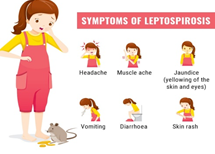
|
Recently, Leptospirosis has emerged as an important infectious disease in the world, due to fluctuation in rainfall pattern.
- It is a potentially fatal zoonotic bacterial disease that tends to have large outbreaks after heavy rainfall or flooding
About:
- The disease Leptospirosis is caused by a bacterium called Leptospira interrogans, or leptospira.
- It is a contagious disease in animals but is occasionally transmitted to humans in certain environmental conditions.
- The organism is carried by many animals and lives in their kidneys. It ends up in soil and water through their urine.
- The carriers of the disease can be either wild or domestic animals, including rodents, cattle, pigs, and dogs.
- The cycle of disease transmission begins with the shedding of leptospira, usually in the urine of infected animals.
|
|
Science and Technology
Tissue engineering

|
Recently, biogenic nanoparticles have been applied in tissue engineering (TE) to obtain improved mechanical and biological performances.
What are biogenic nanoparticles?
- Biogenic nanoparticles are synthesized using biological organisms.
- The reason for choosing biological bodies is that these organisms can easily be cultured, with high intracellular metal uptake.
About:
- Tissue engineering is a multidisciplinary field that combines principles of engineering and life sciences to create functional living tissues for medical applications.
- It involves the development of strategies to repair or replace damaged tissues or organs in the body.
- Tissue engineering utilizes biocompatible materials, such as scaffolds, and incorporates cells, growth factors, and other bioactive molecules to facilitate tissue regeneration.
|
|
Science and Technology
Exercise Ekatha

|
- Indian Navy MARCOS and the Marines from the Maldives National Defence Force (MNDF) has recently undergone the practice of combat shooting, demolition, Close-quarter battle, and diving operations including divator and rebreather diving.
About the exercise:
- Exercise Ekatha aims to enhance interoperability between the two navies, especially in diving and special operations.
- It is conducted on an annual basis.
- Counter-terrorism, maritime security, humanitarian assistance and disaster relief operations are also incorporated under Exercise Ekatha.
- The training regimen of Exercise Ekatha includes Joint Drills, Workshops, Seminars, Tabletop Exercises and specialized training in various combat-related activities.
|
|
Science and Technology
IAF, Army carry out joint exercise

|
The Indian Air Force (IAF) has carried out a joint exercise with the Indian
Army in the central sector with deployment of multiple combat assets to check the operational readiness of the two forces.
About:
- A fleet of Su-30MKI jets of the Indian Air Force (IAF) carried out a strategic mission over the Indian Ocean region for eight hours.
- Similar exercise was recently conducted using Rafale jets.
- The IAF carried out the two missions at a time China has been ramping up its presence in the Indian Ocean region, which is largely considered as the backyard of the Indian Navy.
|



















